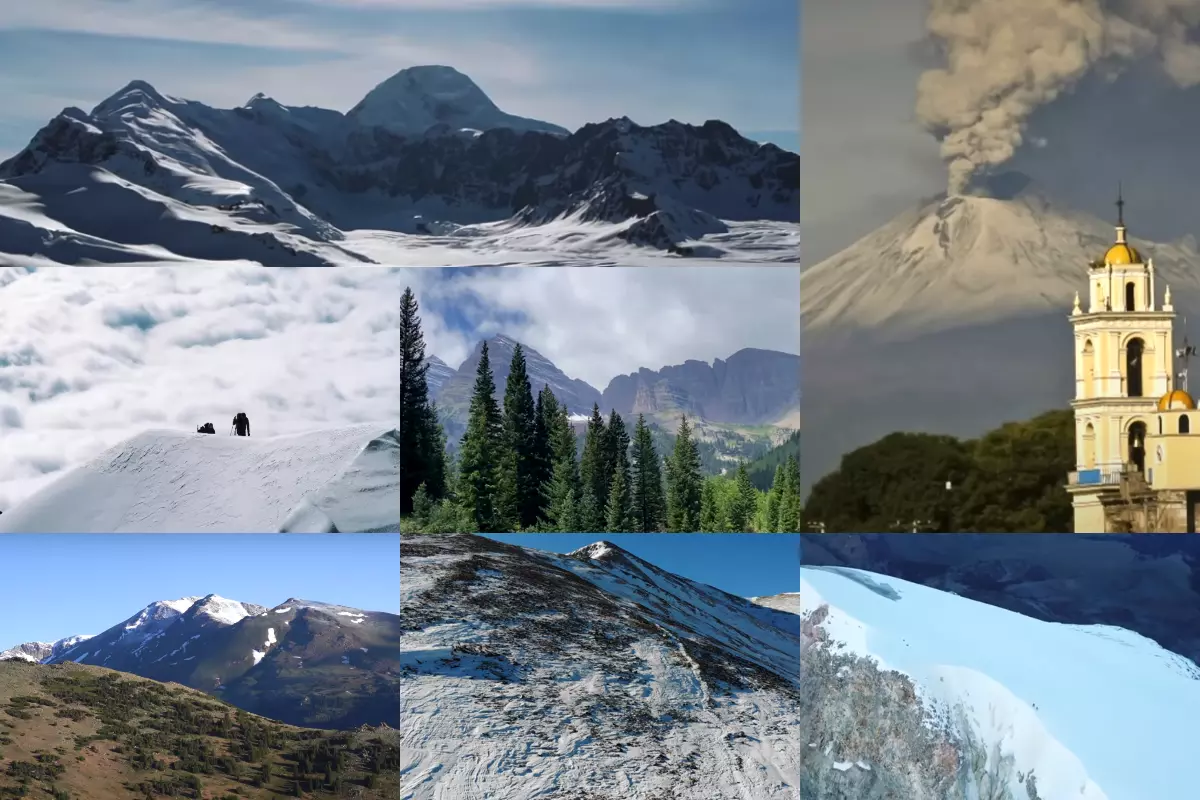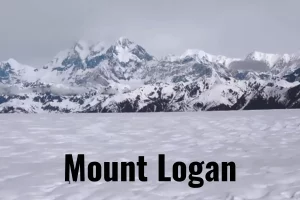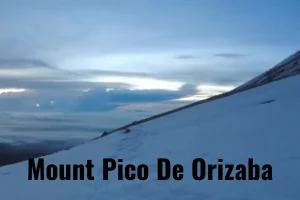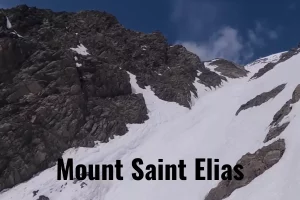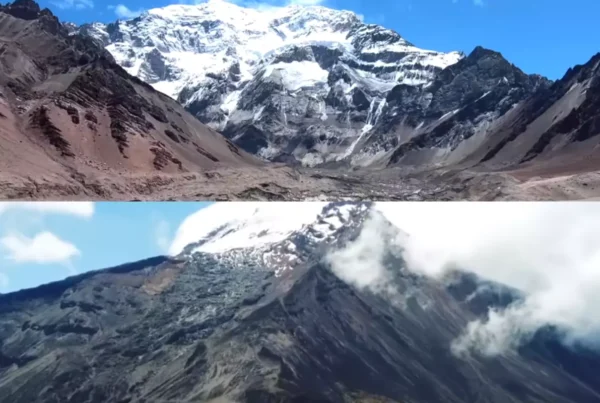Introduction
North America is a big continent that stretches far. It has 23 countries and many different environments. The Great Plains is the biggest, with prairies and grasslands in the middle. However, North America doesn’t appear to be a flat continent; it contains some of the tallest mountains in the entire globe.
In this article, we’ll cover the Top 5 tallest mountains in North America, their location, height, and their effects on the environment and people.
What Is The Tallest Mountain In North America?
With a height of 19,685 feet (6,000 meters), Mount Denali is the tallest mountain in North America. Located in Alaska, it reigns as the continent’s highest peak.
Adventurers worldwide travel to Denali for its famed, beautiful surroundings and challenging climbing routes. Its name, “Denali,” means “The High One” in the Athabascan language, aptly describing its towering presence. Mount Denali is tall and covered in snow. It looks impressive and shows how wild and beautiful North America’s wilderness is.
| Name | Denali |
| Location | Alaska |
| Prominence | 6141 m 20,146 ft |
| Mountain Range | Alaska Range |
| Elevation | 6190.5 m 20,310 ft |
Top 5 Tallest Mountains In North America
Let’s Discuss the top 5 tallest mountains in North America. We’ll talk about their location, height, and their environmental effects on the environment and people.
1. Denali
- Name: Denali
- Location: Alaska
- Mountain Range: Alaska Range
- Elevation: 6190.5 m 20,310 ft
- Prominence: 6141 m 20,146 ft
At 29,028 feet above sea level, Mount Everest’s peak is the planet’s tallest mountain. Denali, is the tallest mountain in the list of the tallest mountains in North America reaching 20,310 feet high. Interestingly, Denali is more elevated than Everest when measured from its base to its summit. Denali, located in the active geological region of Alaska, is part of the Alaska Range and the North American Cordillera Mountain chain.
Denali’s extreme conditions include temperatures plummeting to -70 degrees Celsius and winds roaring up to 150 miles per hour. With 45-mile-long glaciers at the ground, the peak consists of snow and ice on around three-quarters of its surface. While it’s known as Denali today, it was previously called Mount McKinley.
2. Mount Logan
- Name: Mount Logan
- Location: Yukon
- Mountain Range: Saint Elias Mountains
- Elevation: 5959 m 19,551 ft
- Prominence: 5247 m 17,215 ft
Mount Logan, located 25 miles north of Alaska in the southwest corner of the Yukon Territory, is the second peak in North America. It’s part of the Saint Elias Mountains. Mount Logan is the continent’s second-highest peak and Canada’s tallest mountain, reaching an elevation of 19,551 feet.
With a base that stretches an astonishing 25 miles and 12 peaks, Mount Logan is thought to have the most extensive non-volcanic mountain base. It is the source for the Hubbard and Logan glaciers, covered in snow and ice, where temperatures can plummet to -45 degrees Celsius.
You can also read the Top 10 tallest dog breeds in the world.
3. Pico De Orizaba
- Name: Pico De Orizaba
- Location: Puebla Veracruz
- Mountain Range: Cordillera Neovolcanica
- Elevation: 5636 m 18,491 ft
- Prominence: 4922 m 16,148 ft
The third-highest mountain in North America, Pico de Orizaba, also claims the title of the continent’s tallest volcanic summit and stands as Mexico’s highest mountain. This dormant stratovolcano has a distinctive conical shape, built up by multiple layers. It reaches an impressive altitude of 18,491 feet above sea level and carries the poetic Nahuatl name “Citlaltépetl,” which translates to “star mountain.”
The glaciers of Pico de Orizaba are a noteworthy feature. Only two other Mexican volcanoes still contain similar ice masses, and Pico de Orizaba is home to the tallest one in the nation, called Gran Glaciar Norte.
4. Mount Saint Elias
- Name: Mount Saint Elias
- Location: Alaska Yukon
- Mountain Range: Saint Elias Mountains
- Elevation: 5489 m 18,009 ft
- Prominence: 3429 m 11,250 ft
Mount Saint Elias, also known as Boundary Peak 186, comes fourth in North America’s highest peak rankings and shares a range with Mount Logan, spanning Alaska and the Yukon. It reaches an impressive height of 18,008 feet, featuring a remarkably steep incline. The challenging terrain and unpredictable weather deter all but a few brave climbers from attempting its summit. Nonetheless, it has been conquered, with the first recorded ascent achieved by Prince Luigi Amedeo, Duke of the Abruzzi, in 1897.
Mount Saint Elias holds special cultural significance for the indigenous Tlingit people, who refer to it as the “mountain behind Icy Bay” and “Big Mountain.” According to their legends, Mount St. Elias and Fairweather were once united but separated due to a dispute, with the peaks symbolizing their children.
5. Popocatepetl
- Name: Popocatepetl
- Location: México Morelos Puebla
- Mountain Range: Cordillera Neovolcanica
- Elevation: 5410 m 17,749 ft
- Prominence: 3040 m 9,974 ft
You’ll find the active volcano Popocatépetl in Mexico, standing at 17,802 feet. It ranks as the fifth tallest peak in North America and is Mexico’s second highest.
Situated approximately 70 kilometers from Mexico City, the mountain is often visible from the city. While glaciers once graced its slopes in the past, they have now disappeared. Popocatépetl has experienced more than 15 significant eruptions since 1519, making it an active and historically active volcano.
You can also read about How tall is ice spice?
Effects Of The Tallest Mountains In North America
Good Effects
Bad Effects
- Tourism and Economic Benefits: These mountains draw tourists, boosting regional economies and generating employment.
- Biodiversity: Mountainous regions support diverse ecosystems and wildlife.
- Water Resources: Glaciers store water, ensuring a gradual release for downstream communities.
- Environmental Impact: Unregulated tourism can harm mountain ecosystems.
- Climate Change: The local water resources are impacted by melting glaciers, contributing to rising sea levels.
- Natural Disasters: Mountains are prone to avalanches, landslides, and volcanic eruptions.
- Cultural Impact: Environmental changes can disrupt indigenous cultures and traditions.
Good Effects
- Tourism and Economic Benefits: These mountains draw tourists, boosting regional economies and generating employment.
- Biodiversity: Mountainous regions support diverse ecosystems and wildlife.
- Water Resources: Glaciers store water, ensuring a gradual release for downstream communities.
Bad Effects
- Environmental Impact: Unregulated tourism can harm mountain ecosystems.
- Climate Change: The local water resources are impacted by melting glaciers, contributing to rising sea levels.
- Natural Disasters: Mountains are prone to avalanches, landslides, and volcanic eruptions.
- Cultural Impact: Environmental changes can disrupt indigenous cultures and traditions.
Conclusion
These tall North American mountains, like Denali, Mount Logan, Pico de Orizaba, Mount Saint Elias, and Popocatépetl, have good and bad impacts. They attract tourists and bring money to local areas, and they’re home to lots of animals and store water in their glaciers. But too many tourists can harm the mountains, melting glaciers show climate change, and they can have dangerous avalanches and eruptions.
Moreover, they’re essential to indigenous people. We need responsible tourism, protecting nature, fighting climate change, and respecting cultures to keep a balance. This way, we can keep these mountains beautiful and essential for the future.
If you want read more about Tallest Bridge in the world / Tallest woman in the world and many more articles kindly click the link.
FAQs
Are there glaciers on these tall North American mountains?
Many of these mountains have glaciers, which act as natural water reservoirs. For example, Mount Denali has extensive glaciers covering about three-quarters of its surface, while Pico de Orizaba in Mexico hosts the country’s largest glacier, Gran Glaciar Norte.
Are these tall North American mountains safe to climb?
Climbing these mountains is risky due to extreme weather and technical challenges. Proper training and guided expeditions are essential for safety.

